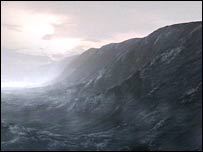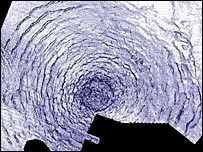Comment: As for Sir William Herschel - from this
link. Also drop 'Planet X' or 'The 12th Planet' and add 'Dark Companion Brown Dwarf Star' on the linked website and you see a picture that has been hidden from us start to form.
New York Times
January 30, 1983
Something out there beyond the farthest reaches of the known solar system
seems to be tugging at Uranus and Neptune. Some gravitational force keeps perturbing the two giant planets, causing irregularities in their orbits. The force suggests a presence far away and unseen, a large object that may be the long- sought Planet X. ... The last time a serious search of the skies was made it led to the discovery in 1930 of Pluto, the ninth planet. But the story begins more than a century before that,
after the discovery of Uranus in 1781 by the English astronomer and musician William Herschel. Until then, the planetary system seemed to end with Saturn.
As astronomers observed Uranus, noting irregularities in its orbital path, many speculated that they were witnessing the
gravitational pull of an unknown planet. So began the first planetary search based on astronomers predictions, which ended in the 1840's with the discovery of Neptune almost simultaneously by English, French, and German astronomers. But Neptune was not massive enough to account entirely for the orbital behavior of Uranus. Indeed, Neptune itself seemed to be affected by a still more remote planet. In the last 19th century, two American astronomers, Willian H. Pickering and Percival Lowell, predicted the size and approximate location of the trans-Neptunian body, which Lowell called Planet X. Years later, Pluto was detected by Clyde W. Tombaugh working at Lowell Observatory in Arizona. Several astronomers, however, suspected it might not be the Planet X of prediction. Subsequent observation proved them right. Pluto was too small to change the orbits of Uranus and Neptune, the combined mass of Pluto and its recently discovered satellite, Charon, is only 1/5 that of Earth's moon.
Recent calculations by the United States Naval Observatory have confirmed the orbital perturbation exhibited by Uranus and Neptune, which Dr. Thomas C Van Flandern, an astronomer at the observatory, says could be explained by "a single undiscovered planet". He and a colleague, Dr. Richard Harrington,
calculate that the 10th planet should be two to five times more massive than Earth and have a highly elliptical orbit that takes it some 5 billion miles beyond that of Pluto - hardly next-door but still within the gravitational influence of the Sun. ...


Comment: As for Sir William Herschel - from this link. Also drop 'Planet X' or 'The 12th Planet' and add 'Dark Companion Brown Dwarf Star' on the linked website and you see a picture that has been hidden from us start to form.
New York Times
January 30, 1983
Something out there beyond the farthest reaches of the known solar system seems to be tugging at Uranus and Neptune. Some gravitational force keeps perturbing the two giant planets, causing irregularities in their orbits. The force suggests a presence far away and unseen, a large object that may be the long- sought Planet X. ... The last time a serious search of the skies was made it led to the discovery in 1930 of Pluto, the ninth planet. But the story begins more than a century before that, after the discovery of Uranus in 1781 by the English astronomer and musician William Herschel. Until then, the planetary system seemed to end with Saturn.
As astronomers observed Uranus, noting irregularities in its orbital path, many speculated that they were witnessing the gravitational pull of an unknown planet. So began the first planetary search based on astronomers predictions, which ended in the 1840's with the discovery of Neptune almost simultaneously by English, French, and German astronomers. But Neptune was not massive enough to account entirely for the orbital behavior of Uranus. Indeed, Neptune itself seemed to be affected by a still more remote planet. In the last 19th century, two American astronomers, Willian H. Pickering and Percival Lowell, predicted the size and approximate location of the trans-Neptunian body, which Lowell called Planet X. Years later, Pluto was detected by Clyde W. Tombaugh working at Lowell Observatory in Arizona. Several astronomers, however, suspected it might not be the Planet X of prediction. Subsequent observation proved them right. Pluto was too small to change the orbits of Uranus and Neptune, the combined mass of Pluto and its recently discovered satellite, Charon, is only 1/5 that of Earth's moon.
Recent calculations by the United States Naval Observatory have confirmed the orbital perturbation exhibited by Uranus and Neptune, which Dr. Thomas C Van Flandern, an astronomer at the observatory, says could be explained by "a single undiscovered planet". He and a colleague, Dr. Richard Harrington, calculate that the 10th planet should be two to five times more massive than Earth and have a highly elliptical orbit that takes it some 5 billion miles beyond that of Pluto - hardly next-door but still within the gravitational influence of the Sun. ...